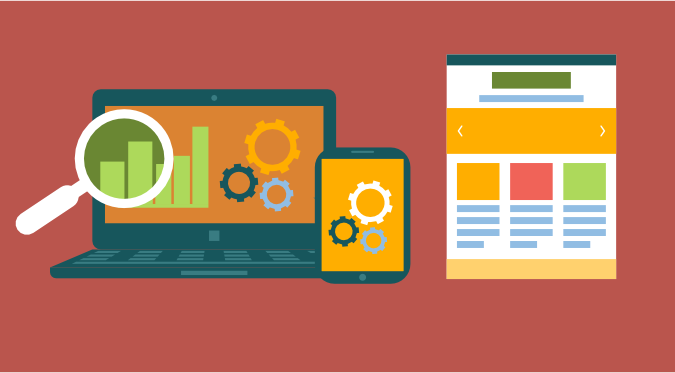Data Exploration Vs. Data Presentation – Learn More About The 5 Key Differences

The verdict is in: Data is big and business intelligence (BI) and data visualization tools are here to stay. Organizations of all sizes are now able to easily connect to their various data sources, interact and make sense of their data, and share their analyses. As the BI marketplace matures, organizations are realizing they need robust tools that can handle a wide range of analysis types. Just as there are various dashboard types and different data visualization types tell different data stories, there are multiple intentions for data reporting and analysis. There are two overarching business intelligence buckets that can help determine what type of data report to build: data exploration reports and data presentation reports. Let’s dig deeper into each one and showcase the different data visualization techniques between the two.
Data Exploration And Data Discovery
Data exploration, or data discovery, is the bread and butter of business intelligence software. These exploration tools help ensure users are bringing quality real-time data into their analytics. The software then blends these various data sources. This ease of access to business data allows a wide range of users to perform analyses and gain insights that were previously difficult to acquire, even for data scientists. It is key to the success of these tools and analytics.
Data discovery is the first step in data analysis. Before businesses can make data-driven decisions, they need to understand the data. As Martin Wattenberg, co-leader of Google's Big Picture visualization research group, recently tweeted, “Visualization doesn't add insight, it multiplies. If you know nothing about your data to start with, visualization won't help.”
The first step to understanding data is ensuring the data is properly prepped for exploration. Luckily, business intelligence can do a lot of this heavy lifting. Data discovery typically involves summarizing the main characteristics of a dataset. This is key to accurate data analysis. Before a formal data analysis can be conducted, data explorers must know how many cases are in the dataset, what variables are included, how many missing observations there are and what general hypotheses the data is likely to support. Without this initial exploration of the database, analysts and data viz tool users are unable to direct their analyses. Even worse, they may end up presenting misleading data and insights.
Data visualization software is powerful for exploratory data analysis (EDA) because it allows users to quickly and simply view most of the relevant features of their dataset. Data exploration techniques enable users to easily identify variables that are likely to have interesting observations. By displaying data visually/graphically, users can quickly visualize if two or more variables correlate and determine if they are good candidates for further in-depth analysis. A cloud-based BI software allows various users to collaborate and interact with the same data, bringing various subject matter experts (SME) to the same table. These acting analysts can then continue to build off the unearthed insights, using data exploration techniques for formal data analysis.
Data Presentation and Data Storytelling

Data presentation is in a different class, due to its distinct use cases, goals and audience needs. Data presentation is the data storytelling side of business intelligence. This is where analysts get to be data journalists. Exploration is a key step in business analytics. However, as digital marketing evangelist, Avinash Kaushik, put it in his 7 Data Presentation Tips, “The actual output that is almost singularly responsible for driving the change we want in our organizations. The thing that is the difference between an organization that data pukes and the one that influences actions based on understandable insights.” Without the right data presentation, the results of data discovery and analysis lose significance.
While data visualization techniques are significant for the exploration, they are just as crucial for the presentation. A well-visualized, formatted, designed and simple data presentation is extremely powerful. The intended audience for a data presentation often was not part of the exploration and analysis stage. Data presentation techniques need to focus on giving the appropriate amount of background and calling out the actionable insights. To further differentiate between exploration and presentation, let’s delve into the key differences!
Explore our BI software 14-day for free & ensure efficient analytics!
5 Key Differences Between Data Exploration and Data Presentation
1. Intended Audience
For the exploration, the primary audience is usually the data analyst(s) - even though with new BI tools, anyone can act as an analyst. These BI tool users are both manipulating the data and visualizing the results. The analysts work with tight feedback cycles of defining hypotheses, analyzing data and visualizing results.
For data presentation, the audience is a separate group of end users, usually not the initial data explorers or analysts. These end users are often less analytical and are often on the frontlines of business decision making. Without direction, they have difficulty connecting the dots between an analysis and the implications for their job.
Make sure to keep your intended audience and purpose in mind when directing your analyses and how they are presented.

2. Analysis Message
Data discovery is about the journey to find a message in your data. The explorer (analyst) is trying to put together the pieces of a puzzle. It is often about the journey through the data and should be treated as a treasure hunt.
Data presentation is about sharing the treasures unearthed through the data discovery process. These messages are then presented to the intended audience who can take action on the insights. Authors of data presentations need to guide an audience through the content with a purpose and point of view.
3. Depth of Explanation
I think you are starting to get the message here, but data exploration and presentation should be dealt with differently. The depth of explanation provided in both is no different.
With data discovery, the meaning of the analysis can be self-evident to the analyst. A big change in an important business key performance indicator (KPI) will require action. The important mission for the analysts is to answer the question of why this is happening.
Data presenters need to explain the results of analysis and deliver possible solutions. When presenting data to an audience, explaining the underlying data gives the audience confidence in the findings. While visualizing data is still key for data presentations, the increased depth of explanation often means there will be more text provided in a data presentation than with the exploration.
4. Best Visualizations, Formats and Interactivity Capabilities
As we just mentioned, data visualization is key to data discovery and data presentation. That said, the data visualization techniques are often different between the two.
For data discovery, the visualizations need to be easy to create and may often show multiple dimensions to unearth complex patterns. Because of this, data discovery is best done through real-time business analytics reporting and dashboard software. These dashboards allow for easier collaboration and tracking of trends and outliers. Interactive capabilities of these dashboards allow for continuous discovery. Design should be focused on the best visualizations and keeping it simple, with minimal text whenever possible.
For data presentation, it is important that the visualizations be simple and intuitive. The audience often doesn’t have the time or need to decipher the meaning of a chart. Data presentation is guided storytelling complete with compelling visuals and thoughtful text descriptions. These presentations should be easily exported to PDF files for easy dissemination. Since these presentations are often shared outside of organizations, design plans should include appropriate branding: logo, colors, font, etc. Make sure you guide the audience through a focused data story. With new BI software, it is easy to be tempted to throw in every data visualization possible. Simple is better. Make sure you choose the best fit for your message.
5. End Goal
The goal of data exploration is often to ask a better question. It is an iterative process of finding better questions to continually gain new insights and a better understanding of how your organization works. Real-time data is extra beneficial because it is an ongoing process. Cloud-based and easily shared business dashboards are also key to exploration, for the same reasons.
Data presentations are about guiding decision makers to make smarter choices. The goal is to communicate the insights found through the exploration phase and the business actions that should result. These presentations are often made on more set schedules: monthly, quarterly, bi-annually, annually, etc. They are also dispersed to a wider audience on various platforms, making design and the ability for the presentations to stand alone more imperative.
Explore our BI software 14-day for free & ensure efficient analytics!
Explore and Present Your Data With Ease
With the right online BI tool, organizations can easily explore and effectively present their data. Now a wide range of business users can act as analysts and data storytellers. It is an exciting time for business intelligence. However, as with anything, having a plan and focus leads to the best results. Just use this list to help determine the purpose of your analysis before you start!